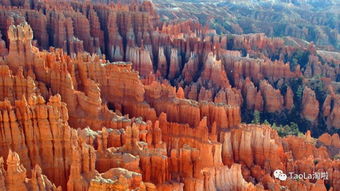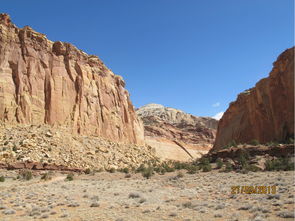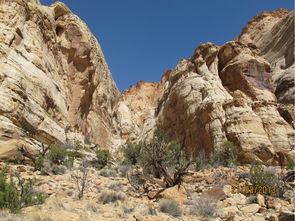Capitol Reef National Park Elevation: A Detailed Multidimensional Introduction
Perched high in the heart of the American Southwest, Capitol Reef National Park boasts an elevation that adds to its majestic allure. With a landscape that ranges from 5,000 to over 9,000 feet, the park offers a breathtaking array of natural wonders. Let’s delve into the various dimensions of Capitol Reef’s elevation and what it means for its unique ecosystem and visitor experiences.
Altitude and Climate

Capitol Reef’s elevation varies significantly, with the lowest point at about 5,000 feet and the highest at over 9,000 feet. This vertical range creates a diverse climate, with the lower elevations experiencing a semi-arid climate and the higher elevations experiencing a subalpine climate. The park’s elevation contributes to its cooler temperatures, which are particularly welcome during the hot summer months.
| Altitude Range (feet) | Climate |
|---|---|
| 5,000 – 6,000 | Semi-arid |
| 6,000 – 7,000 | Subalpine |
| 7,000 – 9,000 | Subalpine |
Flora and Fauna

The elevation gradient in Capitol Reef supports a rich variety of plant and animal life. The lower elevations are home to desert flora like Joshua trees and creosote bush, while the higher elevations feature forests of aspen and pine. The diverse elevation also attracts a wide range of wildlife, including mule deer, bighorn sheep, and various bird species.
Here’s a breakdown of some of the plant and animal species found at different elevations:
| Elevation Range (feet) | Plant Species | Animal Species |
|---|---|---|
| 5,000 – 6,000 | Joshua trees, creosote bush, cacti | Mule deer, desert tortoise, various reptiles |
| 6,000 – 7,000 | Aspen, pine, sagebrush | Bighorn sheep, mule deer, various bird species |
| 7,000 – 9,000 | Subalpine forests, wildflowers | Mountain goats, pika, various bird species |
Geology and Landforms

The park’s unique geological features are a direct result of its elevation. The Capitol Reef monolith, which gives the park its name, is a 100-mile-long sandstone cliff that runs through the heart of the park. This cliff, known as the Waterpocket Fold, is a result of millions of years of geological activity and is one of the most significant geological features in the United States.
At higher elevations, the park features a variety of landforms, including alpine meadows, forests, and rugged mountain peaks. These landforms are a testament to the park’s dynamic geological history and contribute to its stunning natural beauty.
Visitor Experiences
The elevation of Capitol Reef National Park offers a range of visitor experiences, from easy walks to challenging hikes. The lower elevations provide access to the park’s iconic cliff formations, while the higher elevations offer more secluded trails and breathtaking views.
Here are some of the most popular activities in the park:
- Scenic Drives: The park’s scenic drives offer stunning views of the Waterpocket Fold and other geological wonders.
- Hiking: There are numerous trails of varying difficulty, from easy walks to challenging hikes that take you through diverse landscapes.
- Wildlife Watching: The park is home to a variety of wildlife, making it a great place for birdwatching and wildlife photography.
- Photography: